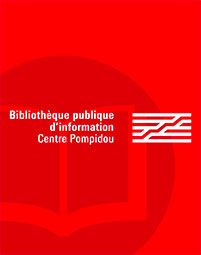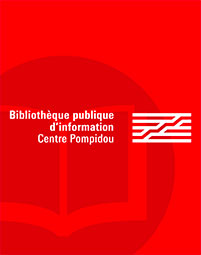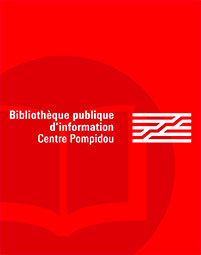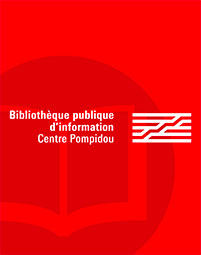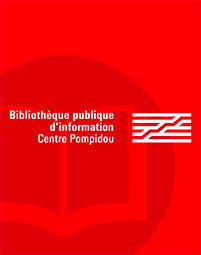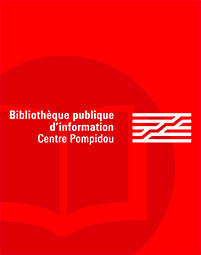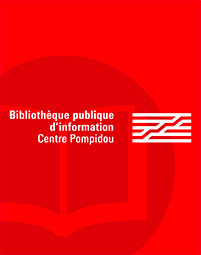La réception de l'architecture du Mouvement moderne : Image, usage, héritage
The Reception of Architecture of the Modern Movement : Image, Usage, Heritage
Jean-Yves Andrieux
Fabienne Chevallier
Préface
Preface
Francesco Bandarin et Jacqueline Bayon17
Introduction
Introduction
Jean-Yves Andrieux
Une histoire culturelle de la modernité architecturale
21
Fabienne Chevallier
La modernité française de l'entre-deux-guerres et l'esthétique de la réception
35
Ouverture
Les défis du Mouvement moderne
Prelude
The Challenges of the Modern Movement
1. Francesco Bandarin
UNESCO's World Heritage Centre and the Programme on Modern Heritage
65
2. Hubert-Jan Henket
« Back from Utopia : the Challenge of the Modern Movement »
69
3. Wessel De Jonge
What happened ?
Fourteen years of Docomomo
75
4. Jean-Louis Cohen
La politique de l'Institut français d'architecture en faveur de l'héritage du Mouvement moderne
81
5. Gérard Monnier
La réception de l'architecture du Mouvement moderne
85
Chapitre I
Les édifices, les ensembles urbains et leurs interprétations (1)
Buildings, Urban Schemes and their Interpretations (1)
On propose de revisiter certaines icônes, certains héros ou certaines doctrines de l'architecture moderne à la lumière du sens qui leur a été donné dans l'histoire et de l'interprétation que l'on peut en faire aujourd'hui.
We shall re-examine certain icons, heroes or doctrines of Modern Architecture from the perspective of the meaning that they have accrued over time and of the interpretation that they receive to-day.
Panayotis Tournikiotis
Introduction :
La réception de la réception
93
1. Edwin S. Brierley
The Iconic Status and Historical Significance of the Leicester University Engineering Laboratory, designed by James Stirling and James Gowan
97
2. Emma Dent Coad
Myths of the Mies Pavilion
103
3. Helene Lipstadt
Eero Saarinen's Arch and Social Distinction : the Lessons from Pierre Bourdieu for Modern Movement Critical Reception History and Heritage
107
4. Claude Loupiac
La réception du Palais de l'UNESCO : la modernité internationale sur la scène française
113
5. Marcello Pazzaglini et Silvia Salvati
Une doctrine - les cinq points de l'architecture moderne - et son manifeste - la villa Savoye : leur réception par les architectes italiens de 1933 à 1960
119
Chapitre II
Publics et usages
Publics and Usages
Plus qu'aucun autre art, l'architecture est un objet soumis au jugement collectif, celui des utilisateurs qui vivent dans les édifices au quotidien. Mais les oeuvres du Mouvement moderne ont aussi fait naître une imagerie de la vie moderne : l'imagerie moderne et l'appréciation collective des bâtiments vont-elles toujours de pair ?
More than any other art, architecture is an object submitted to collective public judgement, that of the users who live within buildings on a daily basis. Yet Modern Movement buildings have also given rise to an imagery of modern life : does this modern #imagery always correspond to the collective appreciation of the built works ?
Jean-Yves Andrieux
Introduction
127
1. Marina Botta
Today's Image of Swedish Housing Areas built between 1930 and 1965
133
2. Isabelle Chesneau
Obsolescence et modernité architecturales
139
3. András Ferkai
Modernity or Modern Imagery : Reception of the Szent Istvàn Park Apartment Complex in Budapest
145
4. Emmanuelle Gallo
La réception et le quartier des gratte-ciel, centre de Villeurbanne, ou pourquoi des gratte-ciel à Villeurbanne en 1932 ?
149
5. Miles Glendinning
The Politics of Utopianism : the Conception and Reception of Mass Housing in England
153
Chapitre III
Les écritures et les images du Mouvement moderne (1)
Writings on and Images of the Modern Movement (1)
Le Mouvement moderne s'est construit à travers les médias, à travers les attitudes personnelles de certains architectes, à travers la circulation et la réinterprétation des oeuvres entre les frontières.
The Modern Movement is structured through the media, through the individual standpoints of certain architects and through the circulation and reinterpretation of works across borders.
Catherine Cooke
Introduction
161
1. Inge Podbrecky
Building Soberly, Acting Bizarrely : Architects and the Modern Movement
167
2. Petra Ceferin
Constructing an Image : Photography of Finnish Architecture
173
3. Hannah Le Roux
The Media and the Modern Movement in Nigeria and the Gold Coast
179
4. Nicoletta Trasi
La réception de l'unité d'habitation de Marseille de Le Corbusier dans les revues d'architecture en Italie
183
5. Alice Thomine
L'architecture à la télévision française (1945-1980) : vers un lieu de débat sur le Mouvement moderne ?
189
Chapitre IV
Patrimoine et stratégies de conservation
Heritage and Conservation Strategies
Comment l'oeuvre devient-elle patrimoine ? À quelles fins l'architecture moderne est-elle inventoriée ?
L'analyse de la valeur des édifices.
Analysis of the value of buildings addresses two questions : how does a built work become heritage ; what is the purpose of an inventory of modern architecture ?
France Vanlaethem
Introduction
195
1. Bruno Fayolle-Lussac
De la stigmatisation à la monumentalisation du Mouvement moderne : L'oeuvre de Le Corbusier en Gironde
201
2. Marieke Kuipers
Fairy Tales and Fair Practice, Considering Conservation, Image and Use
207
3. Sarah Moutury
La Cité Modèle du Heysel : aspect patrimonial
215
4. Alexandra Teague
Rose Seidler House : the Representation of Use Value in Modern Places
219
5. Andrew M. Waldron
Evaluating Modern Heritage in the Federal Government of Canada's Building Inventory
225
Chapitre V
Les écritures et les images du Mouvement moderne (2)
Writings on and Images of the Modern Movement (2)
La modernité s'écrit et se réécrit au gré des figures distinguées par la critique et l'historiographie.
Modernism is written and revised through the criticism and historiography of distinguished figures.
Richard Klein
Introduction
233
1. Nina Rappaport
The Reception and Image of Modern Industrial Buildings
239
2. Barbara Klinkhammer
White Modernism ? One of the Major Misunderstandings in the Reception of the Modern Movement
245
3. Hugo Segawa
The Reception of the Brazilian Trend
251
4. Corinne Jaquand
La fortune critique de Louis Sullivan et de Frank Lloyd Wright en Allemagne : une page d'écriture de la modernité
257
5. Helene Jannière
Les revues françaises de l'entre-deux-guerres et la genèse de la notion de Mouvement moderne
263
6. Nathalie Roulleau-Simonnot
La réception de Robert Mallet-Stevens : la redécouverte d'un architecte au succès controversé
269
Chapitre VI
La réception et les innovations techniques
Reception and Technical Innovations
À travers des études de cas, cette table-ronde présente des aspects nouveaux sur le rôle de l'innovation technique, sa diffusion et sa prise en compte dans les restaurations.
Through case studies, this round-table presents new aspects on the role and diffusion of technical innovation and its consideration in building restoration.
Ola Wedebrunn et Jean-Yves Andrieux
Introduction
275
1. Massimo Dringoli
The Role of Technology in Modern Architecture
279
2. Daniel Bernstein et Vanessa Fernandez
Le pan de verre de l'UNESCO : entre ouvert et fermé, double et simple
285
3. Dominique J.-D. Gilliard
Réhabiliter ou rénover le patrimoine architectural contemporain : Le cas du centre administratif et siège mondial de Nestlé à Vevey
291
4. Kyle C. Normandin
Stone-faced precast panel technology : monitoring and intervention techniques for stabilization
297
5. Carlo Pozzi
Modern Movement Clashes over the Traditions of Building and Living
303
6. Jadwiga Urbanik et Agnieszka Gryglewska
Colour : an Unknown Feature of Wroclaw « Neues Bauen » Architecture
307
Chapitre VII
Les édifices, les ensembles urbains et leurs interprétations (2)
Buildings, Urban Schemes and their Interpretations (2)
Les formes architecturales et urbaines du Mouvement moderne ont un cycle de vie qui comprend plusieurs étapes : le modèle abstrait, la célébration, l'élaboration des mythes, l'utilisation collective.
The architectural and urban forms of the Modern Movement have a life-cycle comprised of several stages : the abstract model, the celebration, the elaboration of myths, the collective use
Kaisa Broner Bauer
Introduction
315
1. Pier Giovanni Bardelli, Carlo Caldera, Marika Mangosio, Carlo Ostorero, Caterina Mele
After the Modern Movement : The Falchera Neighbourhood in Torino, an Example of Reception of the Modern Movement, between the Abstract Model and Quotidian Use
319
2. Hubert Beringer
La médiatisation d'Habitat 67 et le mythe de la fin de l'architecture moderne
323
3. Frederico Rosa Borges de Holanda, Alexandre Sampaio da Silva, Lilian Maria Borges Leal de Britto, Lucia Helena Ferreira Moura, Ronald Belo Ferreira
Life and Death of a Modern Avenue : W-3, Brasilia
329
4. Marc Le Coeur
Le Lycée Camille-Sée (Paris, 1934) ou la modernité célébrée
335
5. Sonja Vidén
The Architecture of the « Record Years » : Characteristics to Preserve and Develop
341
Chapitre VIII
Les valeurs du Mouvement moderne : réception locale et dimension internationale
The Values of the Modern Movement : Local Reception and the International Dimension
Les idées et les oeuvres de référence modernes ont beaucoup circulé entre les pays. Il est très intéressant de confronter les débats locaux sur les oeuvres, la critique qui est faite des oeuvres de l'étranger, et le pouvoir d'influence des expériences étrangères, parfois érigées en modèles.
Modern ideas and works of reference have circulated widely between different countries. It is of interest to compare local debates surrounding these works with their foreign critical reception and the powerful influence of foreign experiments, often upheld as models.
Danièle Voldman
Introduction
347
1. Olga Alekseevna Bukharkina,
Lyudmila Ivanovna Tokmeninova
Reflections on Modern Movement Architecture in the Mass Media of the Urals Region, Russia
351
2. Andrew Leach
Modernity and Architecture in New Zealand
355
3. Aleksandra Stupar
The Political Treatment of the Modern Movement : the Case of Belgrade
359
4. Vincent Bradel
Le Corbusier et Saint-Dié : les termes du débat
365
5. Gilles Ragot
La réception de l'architecture brésilienne à Royan
371
Chapitre IX
Événements et manifestations
Events and Demonstrations
Biennales, expositions, concours, tous ces événements, sous l'effet des médias, ont renouvelé et fixé les interprétations de l'architecture moderne.
Biennials, exhibitions, competitions, all such events, under media pressure, have renewed and standardized interpretations of modern architecture.
Jean-Yves Andrieux
Introduction
379
1. Philip Goad
Australian Reception : The International Architectural Exhibition in Melbourne, 1927
385
2. Raquel Rappaport, Horacio Schwarz, Arie Sivan
« When camels fly » : The 1934 Levant Fair, Tel Aviv
391
3. Aymone Nicolas
Le concours international pour le siège de l'Organisation Mondiale de la santé (OMS), en 1959 : un outil d'innovation
397
4. Márcio Correia Campos
Tropical extravaganza in Berlin : The Reception of the « Niemeyer House » at the Interbau-Berlin, 1957 and of Brazilian Architecture in German, Swiss and Austrian Architecture Journals of the 1940s and '50s
403
5. Louise Annabelle Noble
From Event Architecture to Ephemeral Permanence : Archigram in the Antipodes
409
Chapitre X
L'architecture moderne et la construction des identités
Modern Architecture and the Construction of Identities
Dans de nombreux contextes, et notamment les contextes coloniaux, l'architecture moderne s'est forgée en résonance avec les identités en présence. Sa préservation est elle-même liée au contexte culturel.
In numerous contexts, and notably colonial ones, modern architecture develops out of the colouration of local identities. Its preservation is itself linked to the cultural context.
Stanislaus von Moos
Introduction
417
1. Riccardo Forte
La réception de l'habitation coloniale moderne en Libye (1930-1940). Théories, modèles, débats
421
2. Hiroyasu Fujioka
The Modern Movement Put into a Different Context
427
3. Andrei Gozak
Attitudes towards Modern Architecture in the USSR and in Russia (second half of the 20th century) : A Testimony
433
4. Judi Loach
The Welsh Heritage of Modern Movement - Questions of International Import Raised by one Small Country
437
5. Anja Kervanto Nevanlinna
Professional Reception vs. Cultural Context - For Whom do we Preserve the Architecture of the Modern Movement ?
443
Chapitre XI
Le patrimoine moderne comme patrimoine mondial
Modern Heritage as World Heritage
Au moment où commence le XXIe siècle, le moment est venu de s'interroger sur la place (modeste) des édifices phares du Mouvement moderne dans la liste du patrimoine mondial de l'humanité, et sur les moyens indispensables pour en étendre la protection et en signaler l'intérêt dans les pays signataires de la charte de l'UNESCO.
At the start of the 21st century, the moment has come to question the place (modest) of pioneering buildings of the Modern Movement on the World Heritage List and the necessary means to extend their protection and to signal interest in them within signatory countries to the Charter of UNESCO.
Francesco Bandarin
Introduction
Panel on Modern Heritage as World Heritage : Identification and Preservation of Modern Urban Heritage
451
1. Fabio Grementieri
Modern Heritage as World Heritage : How to find Advocates for Modern Heritage ?
455
2. Jukka Jokilehto
How Should the Basic Requirements of the World Heritage List be Interpreted in the Case of Modern Architecture ?
461
3. Jean-Louis Cohen
Identification et préservation du patrimoine moderne urbain
467
Épilogue
Epilogue
Dani Karavan
L'architecture moderne vivante
473




